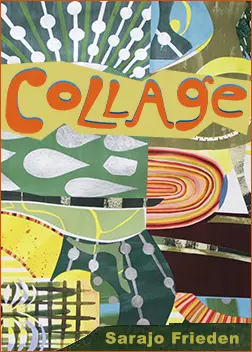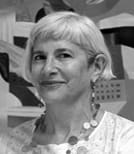Class Description
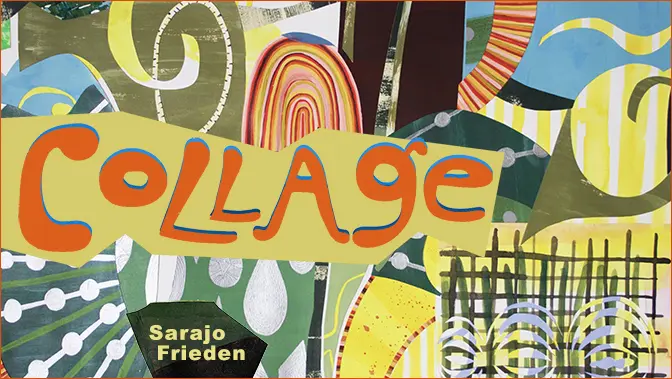
COLLAGE
Teacher: Sarajo Frieden
6 Lessons
I’m interested in moving through my work with an exuberant uncontainment. A fluid relationship with the idea of what beauty can be—stumbling into an awkward beauty—is what interests me. This way of working is useful in opening doors, changing preconceived outcomes, and simply having fun. In this class I hope to share this way of working with you as we create a large collage piece together from a variety of materials and media.
I hope you can join me!
Sarajo Frieden
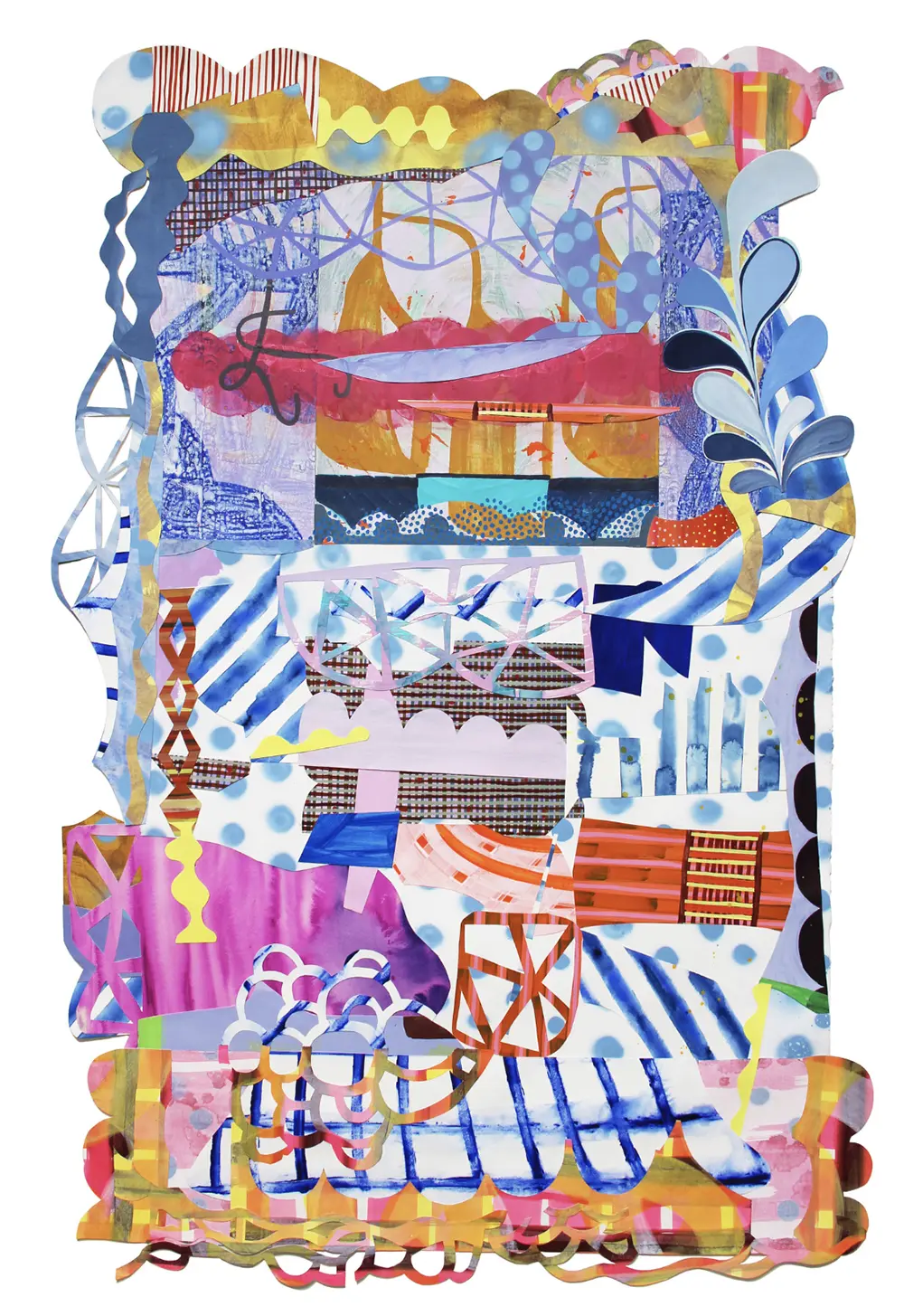
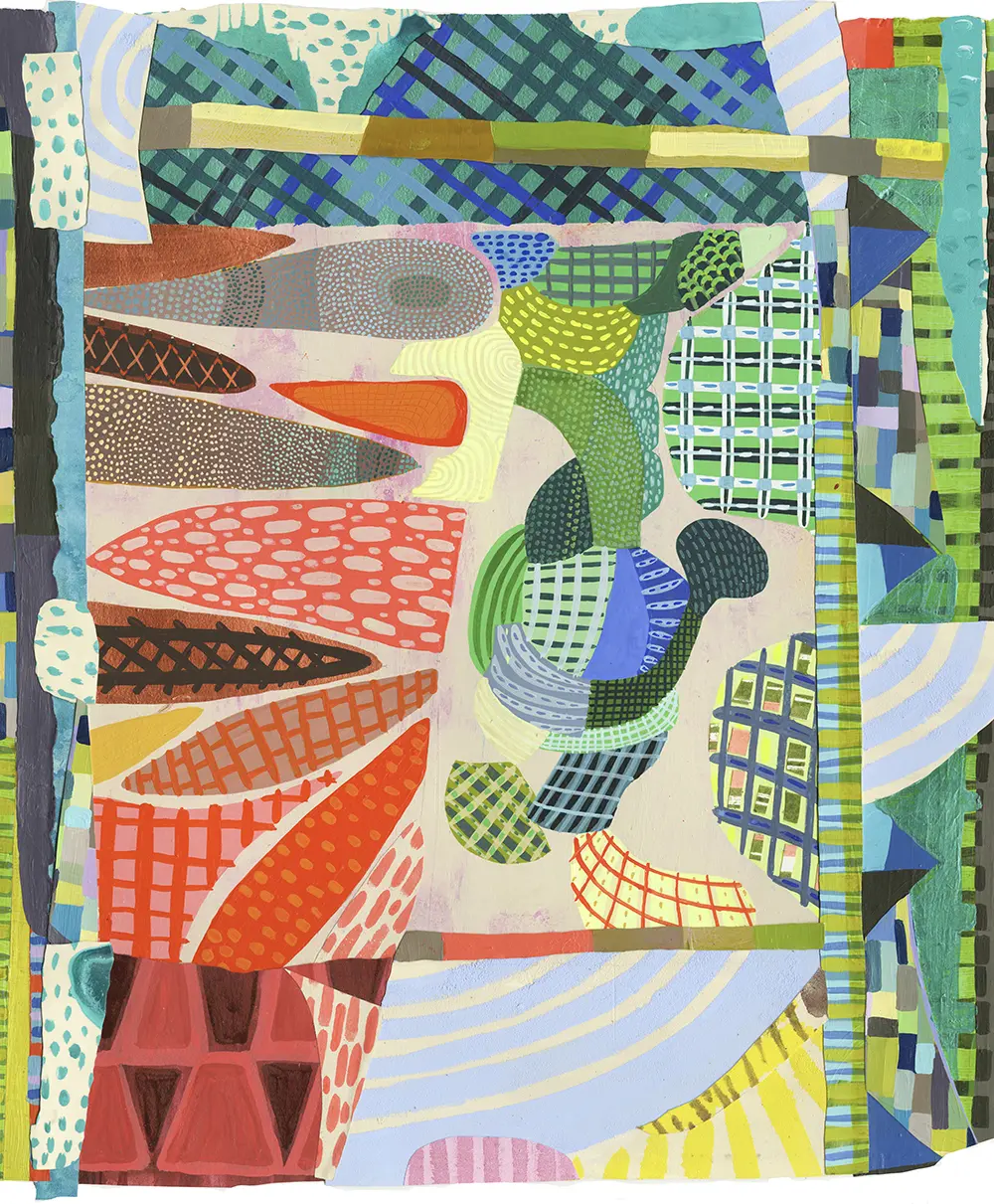
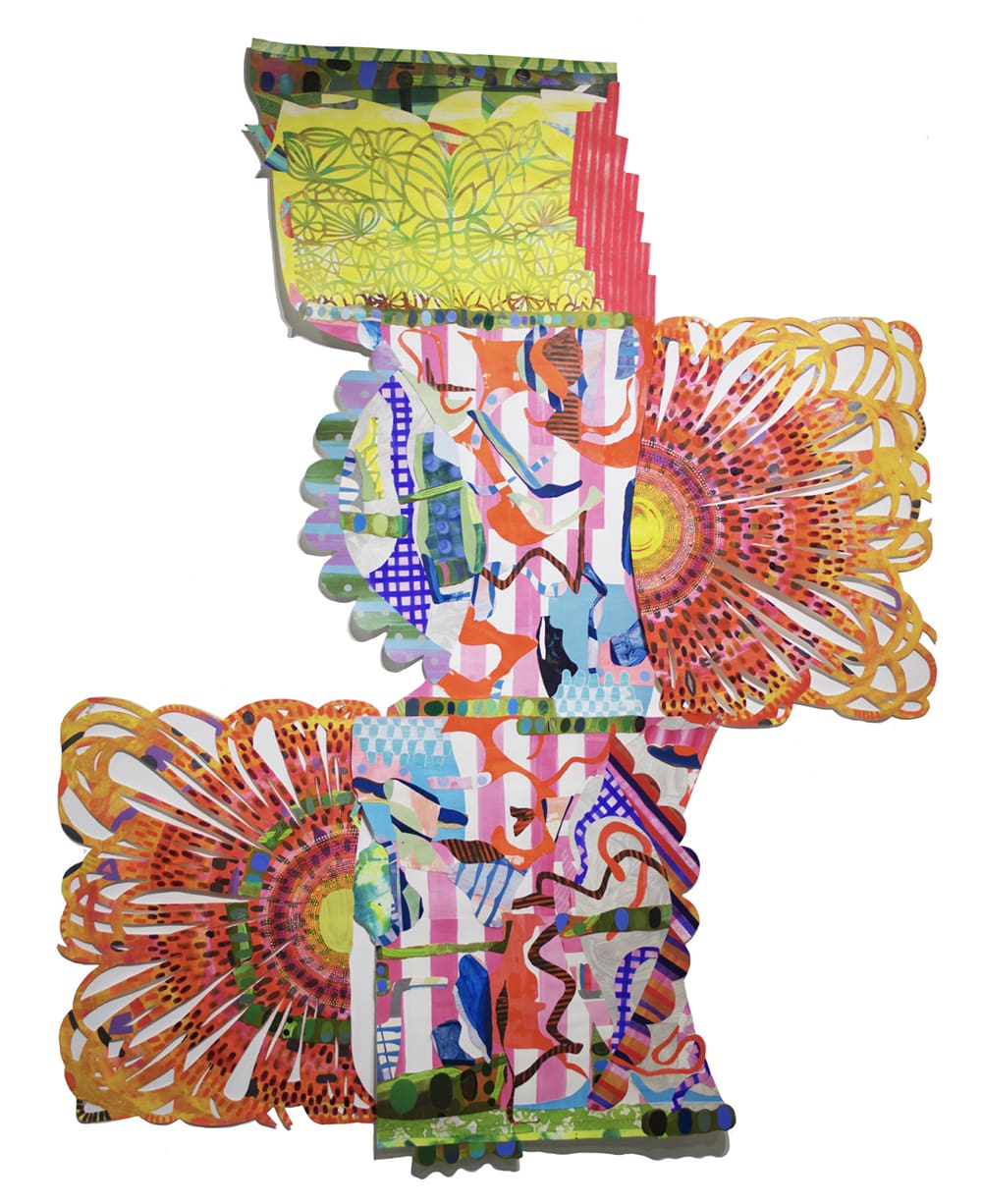
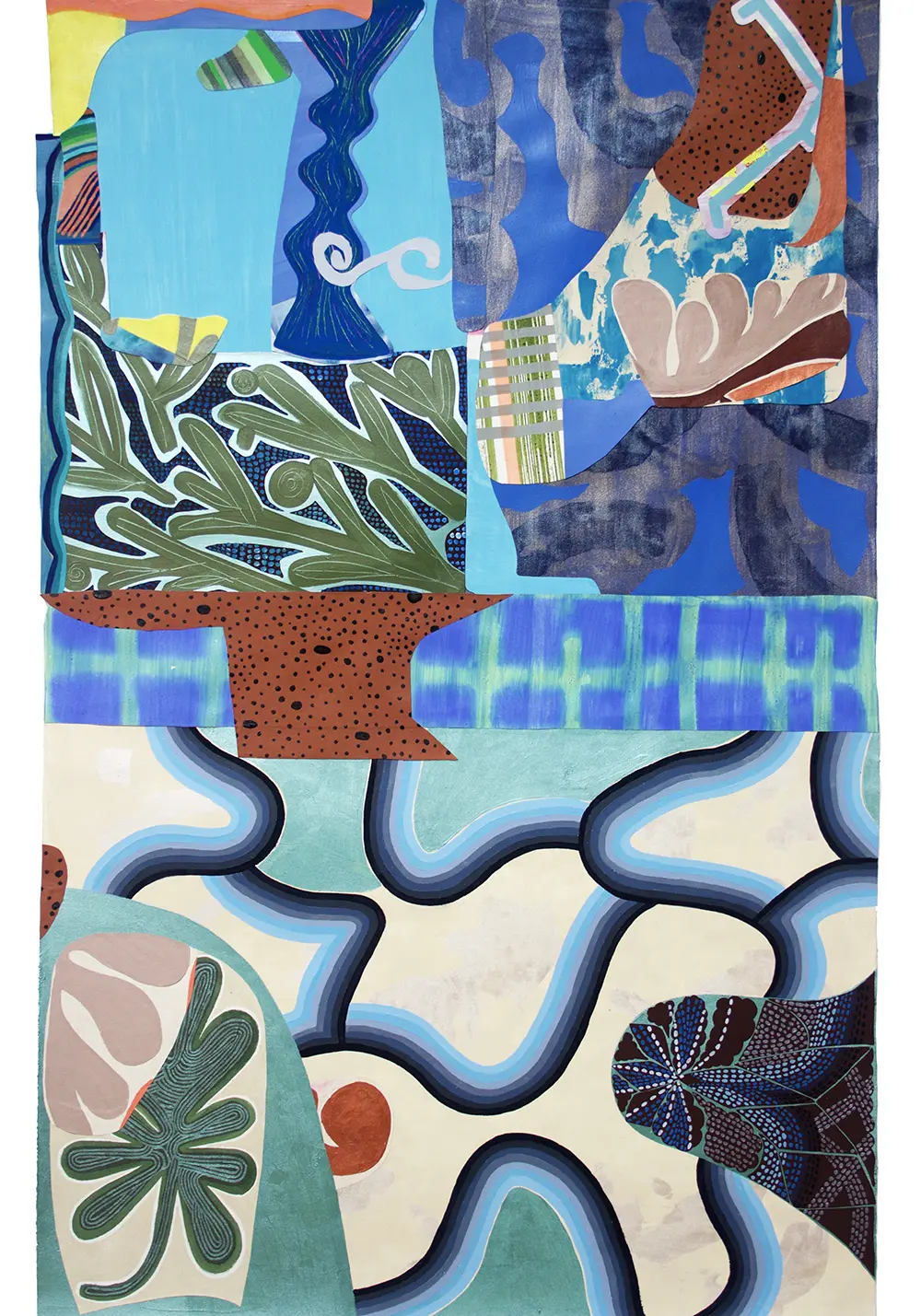
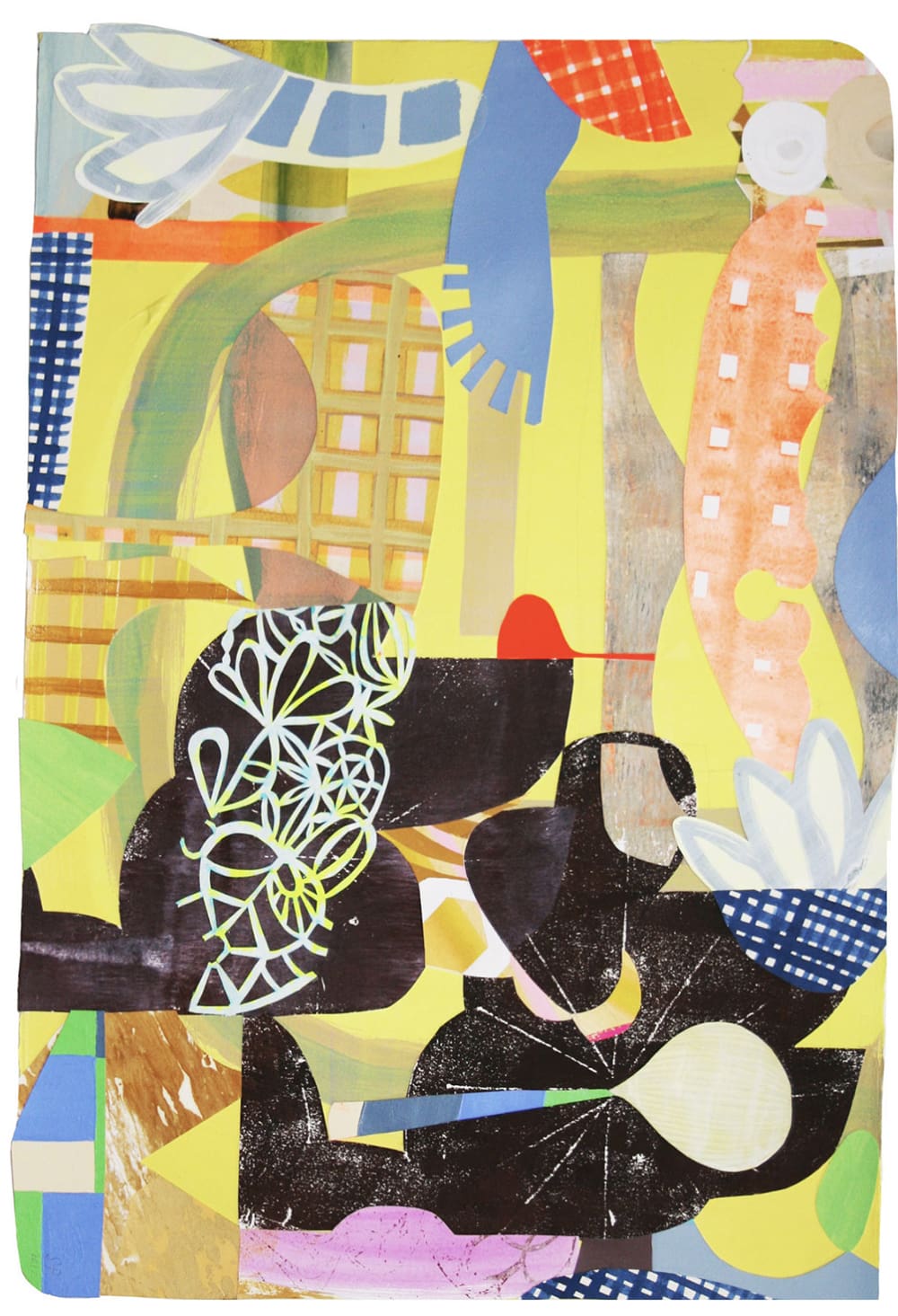
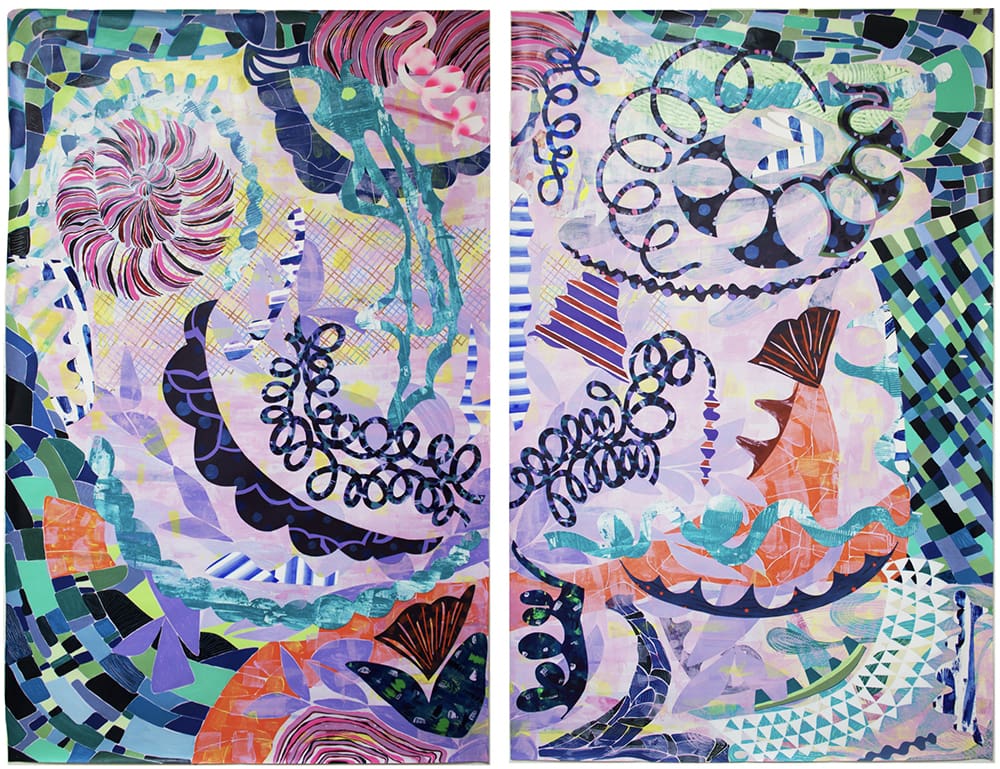
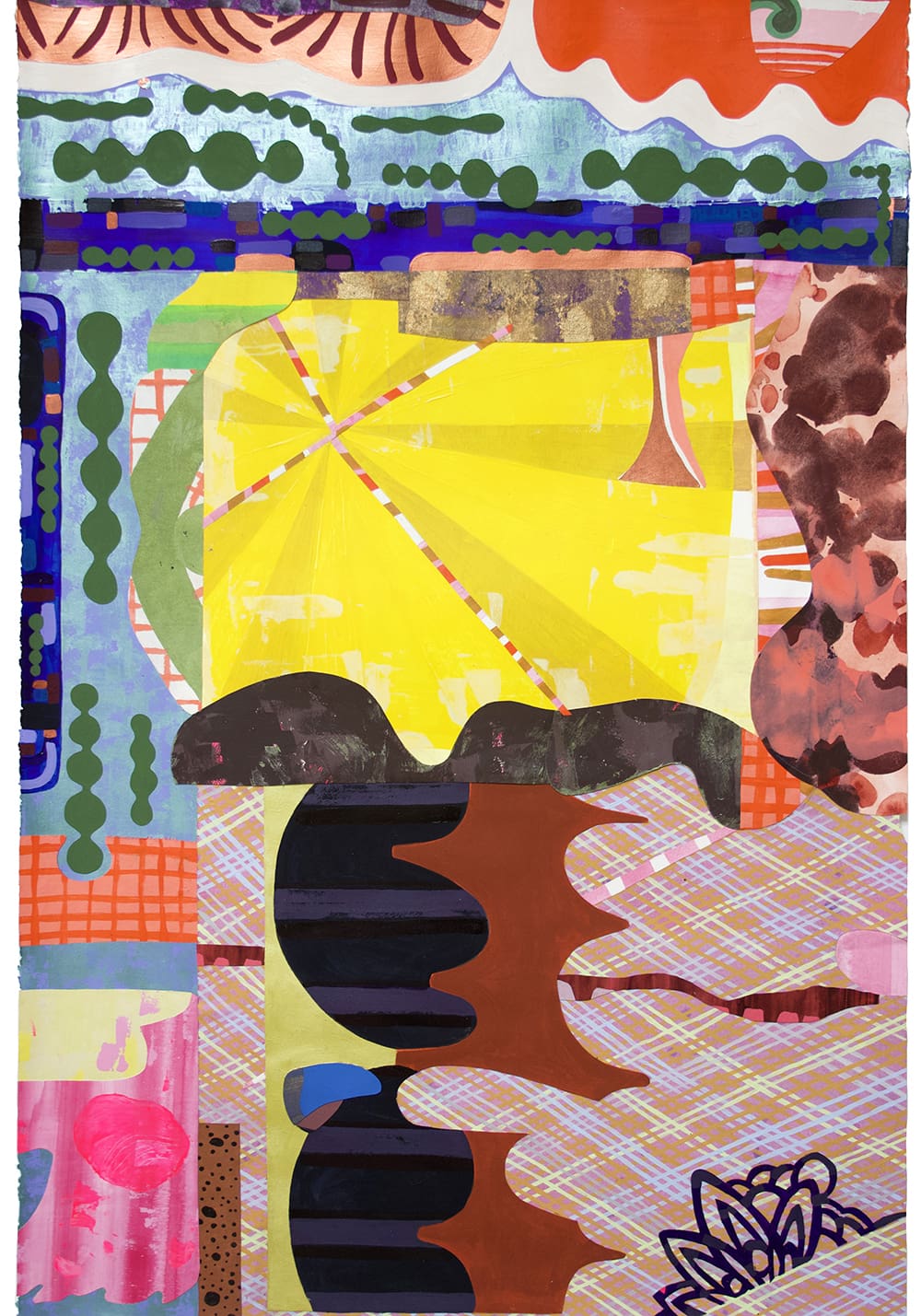
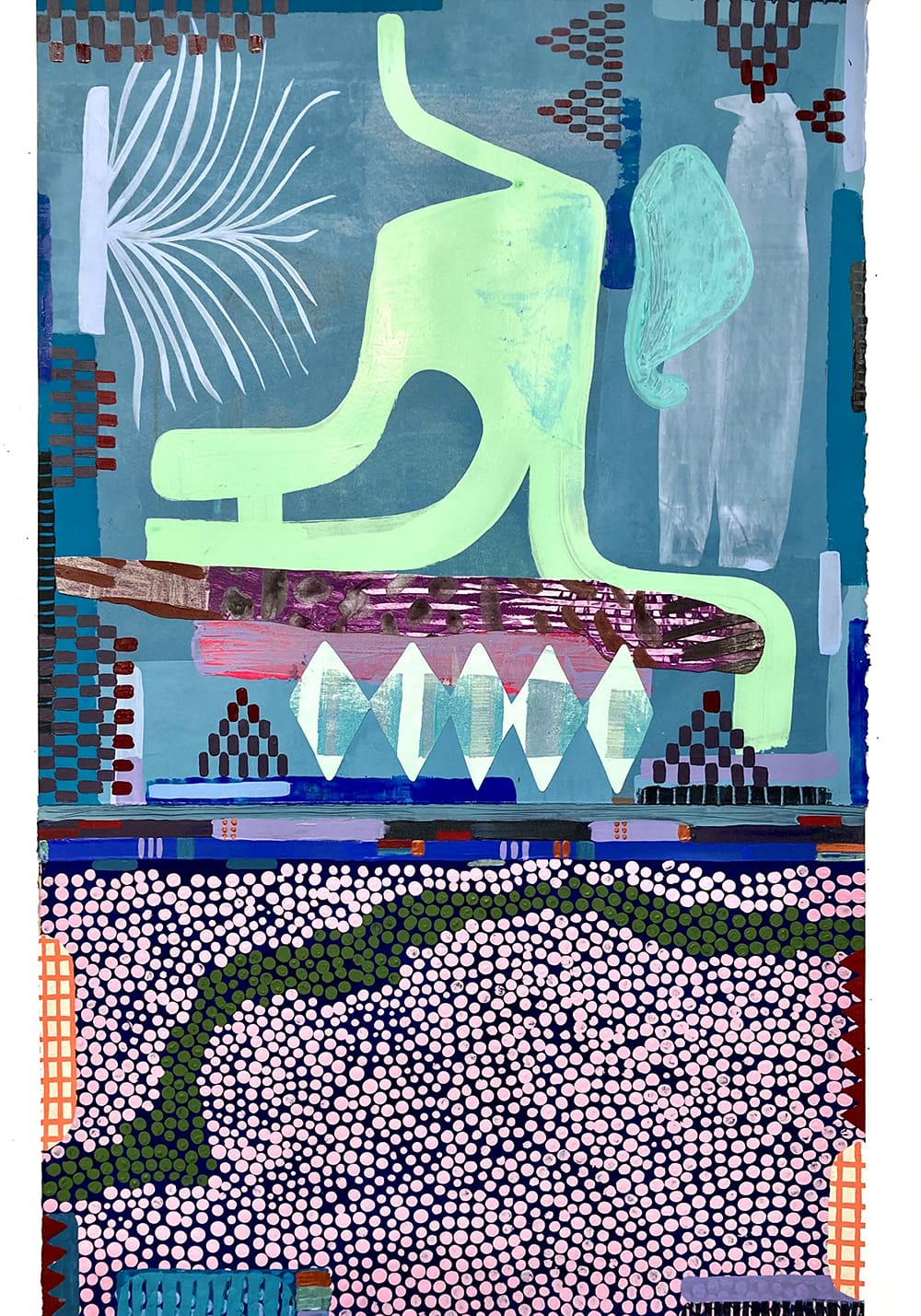
______________________________________
Class Itinerary
Lessons are prerecorded and are available instantly upon signup!
Lesson 1: Creating Background Papers
Welcome! In this first lesson we will be working acrylics and color palettes to create multiple background papers.
Lesson 2: Adding Pattern
Ways into mark making: adding patterns to background papers.
Lesson 3: Creating with Cut Paper
Designing and using templates to create elements for cutting.
Lesson 4: Introducing Muslin
Creating florals and drawings on prepared muslin, which is fun to work on and works beautifully combined with paper elements.
Lesson 5: Putting it All Together
In this lesson you will design and compose your large collage!
Lesson 6: The Final Touches
Assembling, gluing, and final moves.
_____________________________________
For a full list of the supplies you will need, see the tab titled “Supplies” located just under the video screen above.
Supply List
• Paper. The equivalent of two-three sheets of 22″x30″ paper, such as 280 grams BFK Rives; can also use paper you have on hand
• 1 yard of muslin (bleached or unbleached)
• Acrylic Paints (Sarajo likes GOLDEN fluids and Flashe paints, but use what you have!)
• White Gesso
• Matte medium or a PVA glue
• Assortment of paintbrushes
• Brayer
• Cutting mat
• Exacto knife and extra #11 blades
• Scissors
• Funny Foam
• Scraper
• a piece of Tracing paper
Sarajo’s Notes:
Cutting board
I have a variety of sizes, very handy for cutting paper and muslin. I have Uchida and Fiskars brands, but no preference.
Exacto Knife
It’s handy to have several knives. Try to purchase a box of 100 #11 blades (and the knives that fit that size blade) so you can keep the blades nice and sharp. (I keep a handy tin where I deposit all the used blades.)
Scissors
Good scissors are a good investment. Sometimes you might want to cut shapes with an exacto knife and other times a scissors makes sense.
Funny Foam
Available as a kid craft item, it cuts easily with scissors. Use for mono-printing. I use with acrylic paint.
Brush or roller for application of paint.
Papers
I like Rives BFK, a printmaking paper. It comes in different weights. I like 280 grams as a good weight which takes paint well and can be cut fairly easily. You could also use a thinner weight for attaching collage elements, but the thinner weights don’t absorb as much paint. BFK Rives comes in an assortment of colors: white, buff, grey, tan, etc. It has a smooth surface.
Muslin
I buy it in yards, unbleached, at JoAnne’s or any fabric store. No need to get bleached as you will probably be painting over it with gesso.
Paint
I like Golden Acrylics. I mostly use Fluid Acrylics, but also use ones that come in jars and tubes. I also like to experiment with different Golden mediums: matte medium, light molding paste. Flashe paint is a vinyl emulsion, can be used straight from the jar and can be very opaque (depends a bit on the color). It can be thinned with water to get more fluid, watercolor effects. It’s a very matte paint, velvet-like finish, which is why I like to use it.
Gesso
You don’t need to purchase expensive gesso. This is for sealing/preparing the muslin for painting acrylic. You can use it straight from the container or thin with water—the less water the thicker and more opaque the gesso will be.
India ink or Black Sumi Ink: great for drawing and painting on plain paper, loosening up, creating sketches for inspiration or cutting up and adding to collages.
Brushes
I like to keep as many brushes around for making a variety of marks: think different widths, thicknesses, for dry brush work. Old, stiff brushes and wood branches or sticks are also good mark making tools.
Scrapers
I like Bondo scrapers (probably for use in construction), but they work well with paint. Also Princeton/Catalyst makes a line of wedges for painting or clay work. These come in a variety of shaped edges if you like that.
Glue
Use an acid free material, such as matte medium or glue whenever you are working with collage. Sometimes I use soft gel (from Golden) as another medium to adhere muslin to muslin or paper. For glue I like PH Neutral PVA available at most art supply stores (it’s made by Lineco).
Other supplies: butcher paper, plastic for covering tables or for placing under muslin when gessoing. I like to mix my paint colors frequently and I keep a supply of well cleaned food containers with lids handy. Tracing paper: handy to use if you want to draw elements and cut out for placement. You can re-use these, or use flexible clear acetate sheets for the same purpose—as templates.
About the Teacher
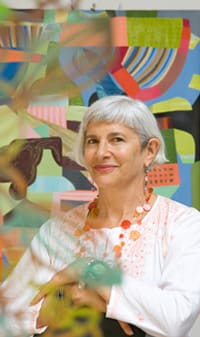
Sarajo Frieden is a multidisciplinary artist whose work explores our relationship to the natural world, the evolving identities of diasporic communities, pattern migration, and an interest in the intersection of art and craft. Borrowing from a hybrid of influences, her works on paper, muslin and canvas explore a range of contemporary and historic visual art vocabulary, including painting, western and non-western textile traditions, and the complex patterns and interplay of organic and geometric forms.
She has exhibited in solo and group exhibitions in the United States and abroad, including at The Atrium at Helms Design Center, Cerritos College, Torrance Art Museum, Brand Art Library, Tiger Strikes Asteroid Los Angeles, Adams Square Mini Park, Monte Vista Projects, and Launch LA gallery. Frieden has received fellowships to the Sam and Adele Golden Foundation Residency in New Berlin, NY, Vermont Studio Center in Johnson, Vermont, Virginia Center for Creative Arts.
Her recently completed mural commissions can be found at Cedars Sinai Urgent Care Clinic in Los Angeles and Seattle Children’s Hospital in Seattle, Washington. She has been an invited guest lecturer and speaker at Otis College of Art and Design, California State University at Long Beach, Cerritos College, and Art Center College of Design. For several decades her work has appeared in graphic novels, illustrated books, film titles, publications, and on murals, textiles and packaging. She lives and works in Los Angeles.
Website: www.sarajofrieden.net
Nuts & Bolts
– Lessons are prerecorded and are instantly available upon signup.
– A private Facebook group and a Padlet group (for those not on FB) will be available for you to (optionally) share your artwork and enjoy and learn from the artwork of others. You may also email your teacher directly with questions or feedback.
– You will have indefinite access to the class videos and materials.











